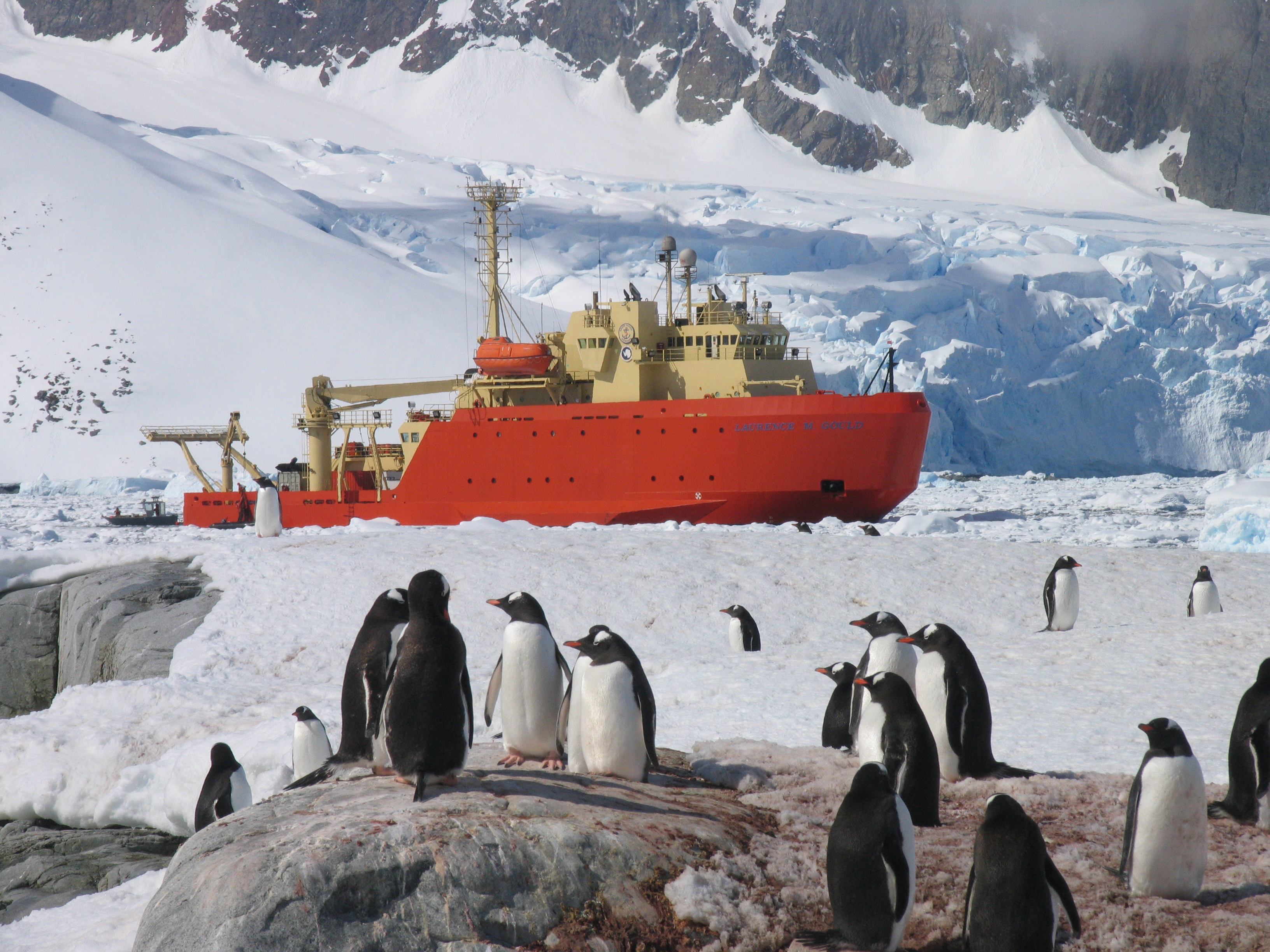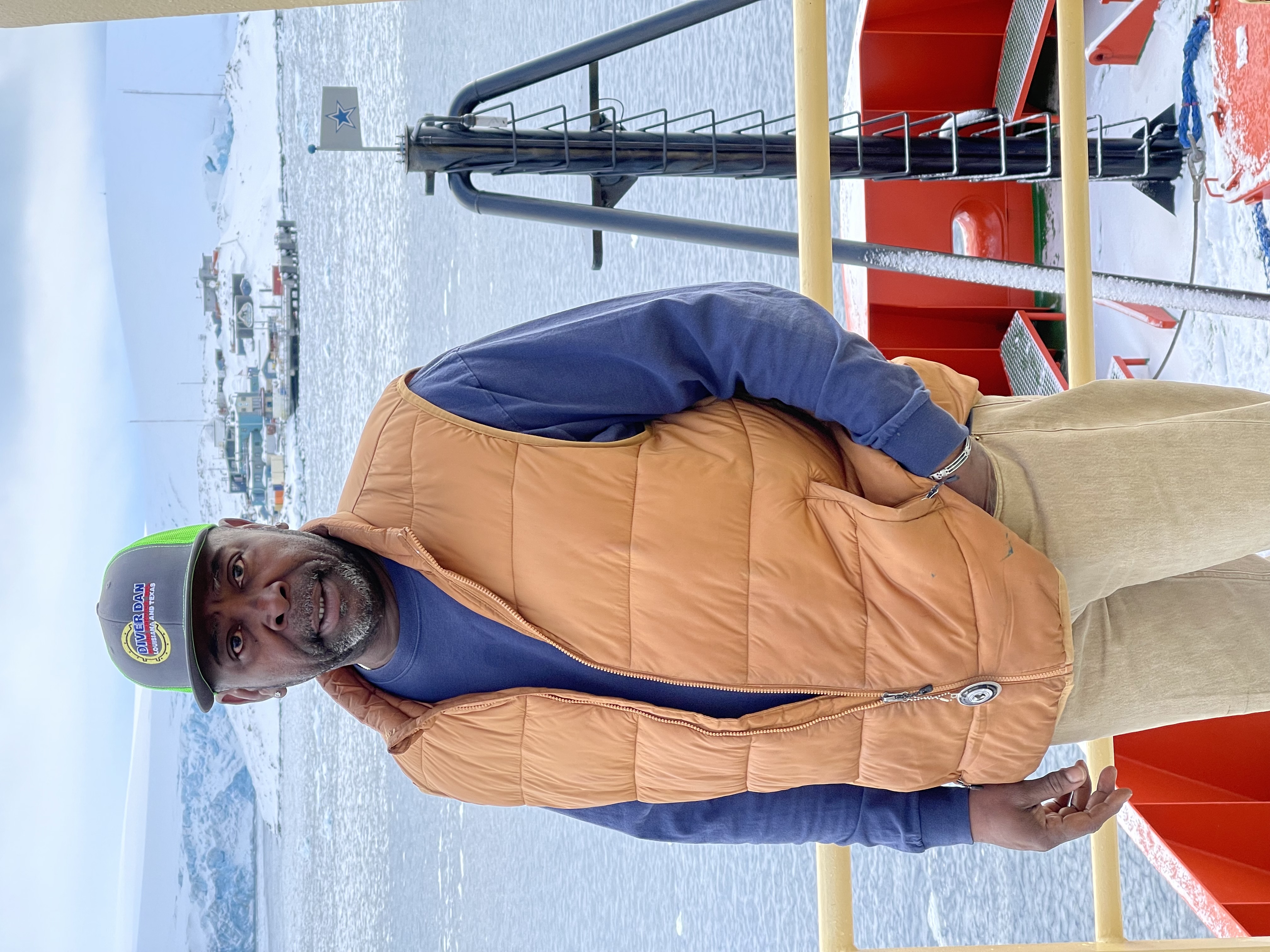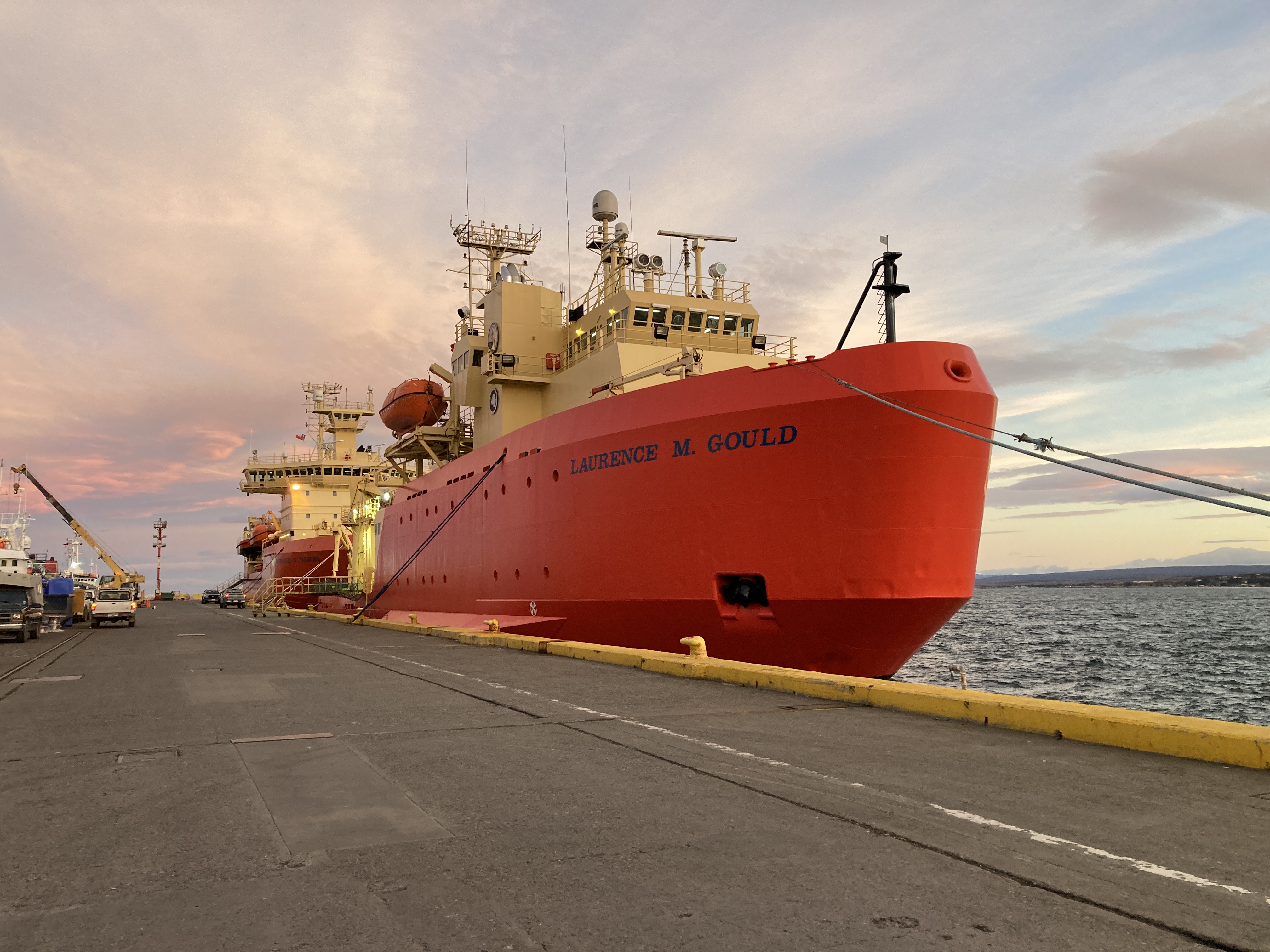Research Vessel Laurence M. Gould Completes 27-Year Run
Posted August 5, 2024
After 27 years of steadfast service to the United States Antarctic Program, the NSF Antarctic Research and Supply Vessel (ARSV) Laurence M. Gould ended its charter to the U.S. National Science Foundation (NSF) in July. Since its maiden voyage, the vessel has played a key role in supporting marine research and logistics operations between NSF Palmer Station and South American ports, as well as scientific discovery in the region.
Named in honor of polar explorer Laurence McKinley Gould, the NSF ARSV Laurence M. Gould was completed in 1997 by Edison Chouest Offshore, Inc. (ECO), based in Galliano, Louisiana. It replaced the NSF Research Vessel Polar Duke, chartered by NSF from 1985-1997. The ARSV Laurence M. Gould was a 76-meter ice-strengthened vessel designed for year-round polar operations and could accommodate 27 research scientists and staff for missions up to 75 days long.
Captain Ernest Stelly aboard
the LMG, which he helmed through
the final decade of operations.
The ARSV Laurence M. Gould embarked on its inaugural research cruise on January 22, 1998, less than one month after arriving in its home port of Punta Arenas, Chile. It carried a Long-Term Ecological Research (LTER) team studying the Antarctic Marine Ecosystem. LTER teams would make at least 15 more voyages on the vessel in subsequent years.
Multiple LTER projects were conducted from the ARSV Laurence M. Gould over the years. In all, more than 300 research events were supported with an estimated 4,000 days dedicated to marine-based science.
Over its service time, the ship spent nearly 6,300 days at sea, much of it in the Drake Passage, widely considered among the most treacherous bodies of water in the world. Researchers and vessel personnel conducted well over 3,000 deck operations, including trawls, Conductivity, Temperature and Depth (CTD) instrument deployments, mooring operations, small boat operations and fishing deployments. More than 1,000 days were spent supporting NSF Palmer Station science, and another 1,000-plus days were dedicated to critical operations and logistics that enable the research at the remote locations, including removing hazardous materials and retro cargo from the station and providing medical movements.
Photo Credit:April Brown
In what would be their final shared
docking, the NSF Research Vessel
Laurence M. Gould and NSF Research Vessel
Icebreaker Nathaniel B. Palmer at
the pier in Punta Arenas, Chile.
With the end of NSF’s charter of the ARSV Laurence M. Gould, marine research operations for the USAP will carried out by the larger NSF Research Vessel Icebreaker (RV/IB) Nathaniel B. Palmer.
The ARSV Laurence M. Gould has been a valuable component of the U.S. Antarctic Program for nearly three decades, and we wish it bon voyage.
Additional Photos

Photo Credit: Christine Hush
Gentoo penguins watch the research vessel Laurence M. Gould near Petermann Island. The Gould is one of two research vessels operated by the National Science Foundation

Photo Credit:Bob DeValentino
Palmer Station personnel, serving as line handlers, untie the research vessel Laurence M. Gould from the station's pier. The ship serves as a research platform, as well as a logistics vessel, bringing personnel, cargo and fuel to the station, which is located off the Antarctic Peninsula, a four-day ride across the Southern Ocean from Chile.







